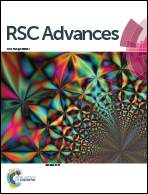PLS and N-PLS based MIA-QSPR modeling of the photodegradation half-lives for polychlorinated biphenyl congeners
Abstract
Multivariate image analysis applied to quantitative structure–property relationships (MIA-QSPR) has been used to predict photodegradation half-lives of polychlorinated biphenyls in n-hexane solution under UV irradiation. Owing to the high cost and laboriousness in experimental tests, developing a simple method to assess the photostability of the compounds is important in environmental risk assessment. The predictor block was built by superposition of the chemical structures (2D images), which was unfolded to a matrix, suitable for multilinear and classical partial least squares, N-PLS and PLS, respectively, as regression methods, demonstrating different predictive capability to each other. Model performance was improved after removing an outlier, and the results were in general more accurate than the ones previously obtained through quantum chemical descriptors analysis. Model validation and Y-randomization test proved that the developed model has goodness-of-fit, predictive power, and robustness. Additionally, the applicability domain of the developed model was visualized by Williams plot. This study showed that a simple procedure is able to give highly predictive models, useful in ecotoxicology, independent of the regression method used for this class of compounds.



 Please wait while we load your content...
Please wait while we load your content...